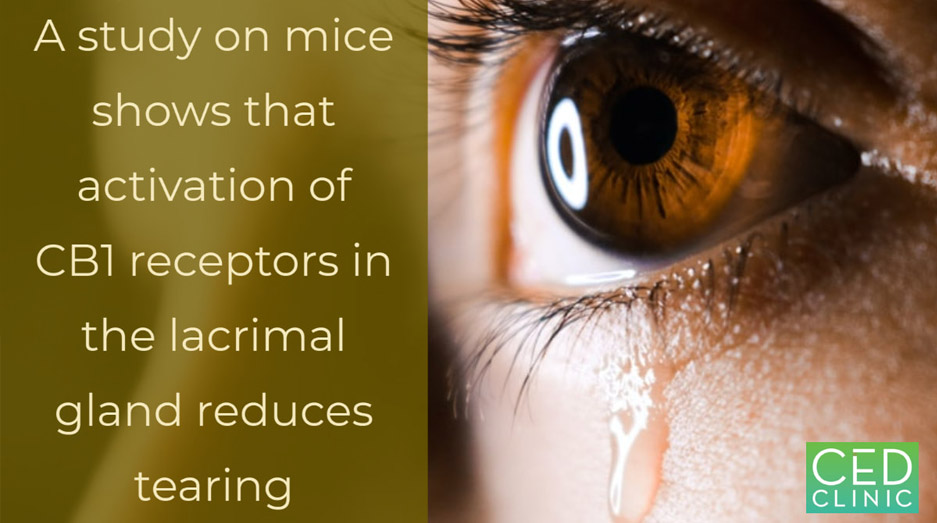THC Regulates Tearing via Cannabinoid CB1 Receptors
In Summary:
Over the past decade, changes in the legal status of cannabis in many US states have been accompanied by increasing cannabis use; however, the effects of its consumption on eye health are poorly documented and studied. Cannabis users, however, commonly report to experience aqueous deficiency dry eye (ADDE), a condition that can lead to blurry vision, eye pain, light sensitivity, itchy eyes, and red eyes.
A pioneering study recently demonstrated the presence of CB1 receptors in axons (or nerve fibers) that innervate the eye’s lacrimal gland, which secrets the aqueous portion of the tear film. Cannabinoid receptors, including CB1 and CB2, when activated by active components of cannabis – most noticeably tetrahydrocannabinol (THC) – are responsible for the euphoric sensations that users feel.
More importantly, activation of CB1 receptors by THC was shown to reduce tearing in male mice but not in female mice. Another notable observation was that the amount of CB1 receptors is approximately four- to fivefold higher in male than female mice. Based on these data, the researchers proposed that the mechanism underlying the dry eye symptoms frequently reported by cannabis users is likely THC activation of CB1 cannabinoid receptors in the lacrimal gland. They also postulated that THC’s more ambiguous impacts in females likely result from its interactions with other unknown receptors.
Through this study, the scientists not only shed light on an unknown pathway regulating tear production but also strive to explore potential molecular targets for treating ADDE. The resulting therapy would benefit patients with or without cannabis use alike.

